Granada Guide
Our Guide To Granada
“Granada is such an obviously habitable city – its waters so clear, its views so beautiful and its pâtisseries so good.” Gerald Brenan
Proud and majestic, Granada abounds in natural beauty and enjoys an enviable position, nestled between soaring mountain peaks and fertile plains. Its modern city centre boasts wide boulevards of handsome apartment buildings from the late 1800s, classical plazas teeming with neighbourhood banter and smartly-dressed children, and a plethora of bars and cafes offering free tapas with your drink throughout the city. Her medieval Arabic quarter, the Albaícin, enjoys UNESCO World Heritage status, but rather than being brash and boastful, this charming neighbourhood seems destined for humility as its multi-racial community ascertains.
And as if that wasn’t enough, Granada’s crowning glory: the world-famous Alhambra, the memory palace of the last dynasty to reign in the Muslim kingdom of Al-Andalus: the Nasrids. A stunning complex of intricate architecture and sophisticated design, housing works of beauty that defy the human eye. An absolute must for any visitor to Andalucia.
Accommodation
A Few of Our All-time Favourite Boutique Hotels in Granada
Carmen de la Alcubilla del Caracol
Well off the beaten track, in the upper reaches of the Realejo and hidden away behind high walls and swathed in gardens, this is a place with a very private feel. Its seven rooms (some of which come with views out across the vega) are individually decorated and give the impression of staying at a friend’s house rather than a cold, sterile hotel. It was also where former British Prime Minister David Cameron stayed with his wife when they visited the city back in 2011.
Address: Calle del Aire Alta, 12, 18009 Granada; 958 21 55 51
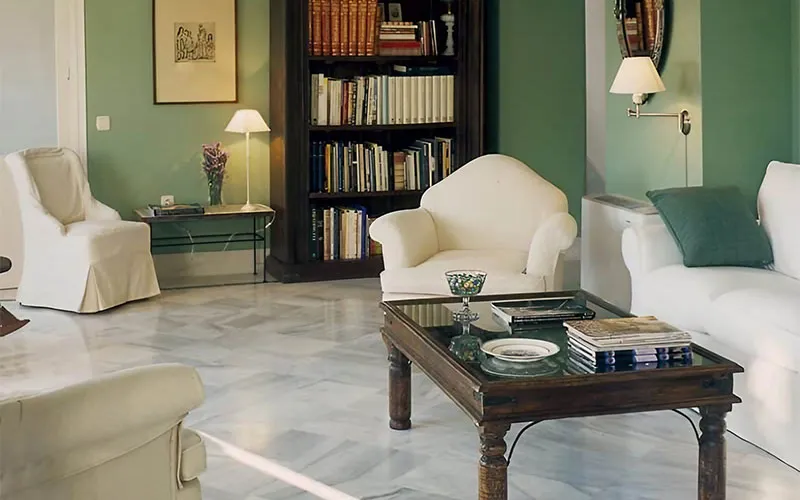
Villa Oniria
Villa Oniria is grander, luxe-ier and a little more clean-edged than the rest of our pick of boutique hotels in Granada. Housed within a striking 19th-century palace, it consists of 31 stylish rooms, a small spa, some lovely gardens, a cosy sitting room-cum-bar where in winter they get the fire roaring in the grate, and one of the best restaurants in Granada (see below).
Address: Calle San Anton, 28, 18005 Granada; 958 53 53 58
Carmen del Cobertizo
Carmen del Cobertizo is another fabulous little place to stay in Granada with a very un-hotel sort of feel. Hidden away down a crack of a street in the lower Albayzin, this charming B&B is home to seven rooms clustered around a gorgeous central patio and a leafy garden complete with – glory be – a dipping pool. If the décor in the rooms might be a little florid and fussy for some tastes, the authentic Andaluz charm with which the house and gardens drip more than make up for it.
Address: Calle del Cobertizo de Santa Ines, 6, 18010 Granada; 958 22 76 52
Casa Morisca
Arriving at Casa Morisca, with its wooden galleries, stuccoed doorways, green and blue zellige-style wall tiles, gleaming terracotta floors and central fountain, you could be mistaken for thinking you’re walking into a riad in Marrakech. One of the best boutique hotels in Granada, the rooms are simple but traditionally and attractively decorated, the staff are friendly and attentive, and the location is second-to-none.
Address: Cuesta de la Victoria, 9, 18010 Granada; 958 22 11 00
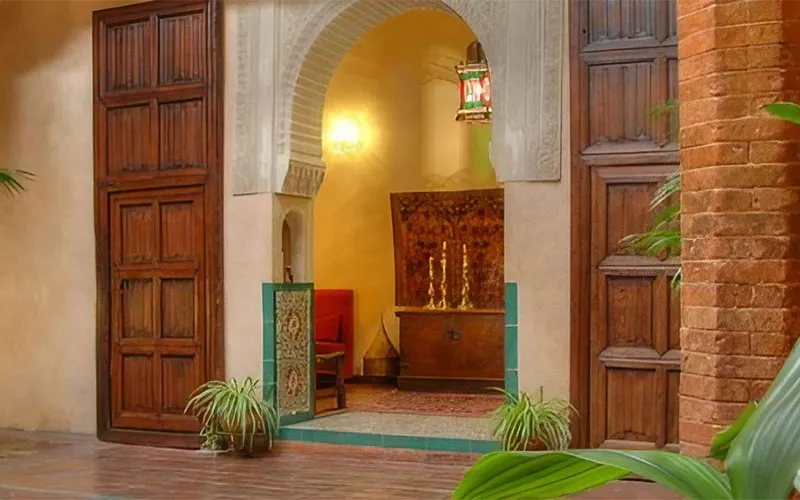
Hotel Casa 1800
This handsome 17th-century nobleman’s house just off the River Darro is home to 25 exuberantly decorated rooms (think baroque-style headboards and glinting chandeliers) clustered round a typical patio. (Toma tip: book a Deluxe Room for a tiny terrace with views of the Alhambra.)
Address: Calle Benalua, 11, 18010 Granada; 958 210 700
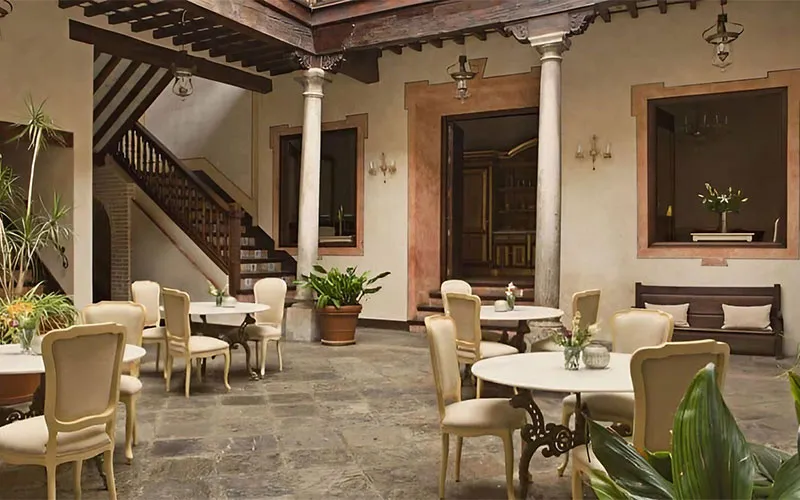
Restaurants
A Selection of the Best Places to Eat in Granada
La Fabula
Ismael Delgado Lopez (a Michelin-starred chef and former student of Santi Santamaria) heads up the kitchen at La Fabula in Hotel Villa Oniria. Cheap it obviously is not, but with the exotic likes of eel, marrowbone and cockscombs popping up in superbly put together and beautifully presented dishes, for fine dining in Granada few other places even come close.
Address: Calle San Anton, 28, 18005 Granada; 958 250 150
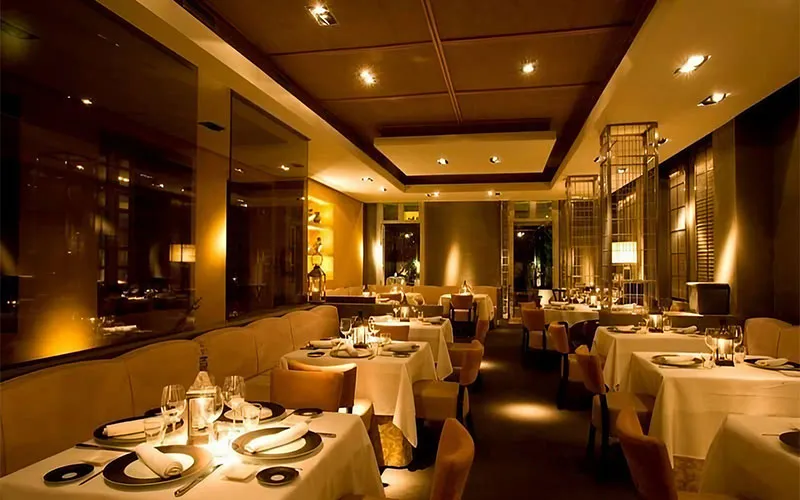
El Claustro
One place that can be mentioned in the same breath as La Fabula is El Claustro. Another hotel restaurant (this time in the five-star AC Palacio de Santa Paula) it takes its name from the fabulous arched cloisters of a 16th-century convent. In the kitchen, chef Juan Andres Morilla serves up fantastical creations – think tree-shaped starters adorned with whimsical concoctions and Nasrid garden-inspired desserts – that more than match the surroundings.
Address: Gran Via de Colon 3, 118001 Granada; 958 805 740
Mirador de Morayma
There are various restaurants in Granada with views of the Alhambra. Few, though, feel like it’s a sitting just across the table from you. The food on offer may not be quite as stellar as that of El Claustro or La Fabula – it’s homespun rather than haute – but when you’re headlining with one of the world’s most famous views surrounded by the jasmine-scented gardens of a traditional carmen you don’t really need to overcomplicate things.
Address: Calle Pianista Garcia Carrillo, 2, 18010 Granada; 958 22 82 90
Damasqueros
Over in the Realejo, local chef Lola Marin’s cooking is all about high-class renderings of Andaluz dishes and it channels the three culinary cultures of the city, Moorish, Jewish and Christian. The weekday tasting menu has a heavy emphasis on local produce, with Motril-caught octopus and lamb from the windswept Sierra of Segura, coming together with dates, mushrooms, truffles and other seasonally varied ingredients to spectacular effect.
Address: Calle Damasqueros, 3, 18009 Granada; 958 21 05 50
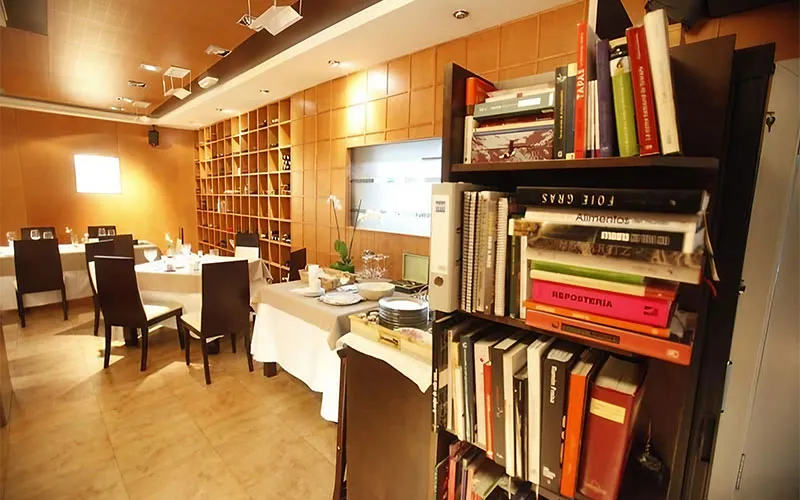
La Oliva
“We are not a restaurant”, the website plainly states. That may be the case – La Oliva is a private dining experience seating just a handful of people nightly – but it very definitely is one of the best places to eat in Granada. Held in a deli in the heart of the Realejo your charming host, Francisco, leads you on a dizzying journey through the food and wine of southern Spain. Unmissable.
Address: Calle del Rosario, 9, 18009 Granada; 958 22 57 54
Tapas Bars
Our Favourite Tapas Bars
La Trastienda
With access gained to the bar through sneaking behind the counter of a butcher’s shop La Trastienda feels like a Granadino version of an elicit speakeasy. It’s not, of course, but it is a great place to hole up in for a few hours in the company of a fine Rioja and a board of cheese and Jamon Iberico.
Address: Calle Cuchilleros, 11, 18009 Granada; 958 22 69 65
Casa de Vinos La Brujidera
Just round the corner from La Trastienda, you’ve got a choice between sitting outside in a little cobbled square flanked by a Carmelite convent or inside propped up at the busy bar. Either way, the wine selection is one of the best in the city – with a huge selection by the glass – and comes accompanied with light dishes like olives, cheeses, smoked fish and ham. An institution.
Calle Monjas del Carmen, 2, 18009 Granada; 958 22 25 95
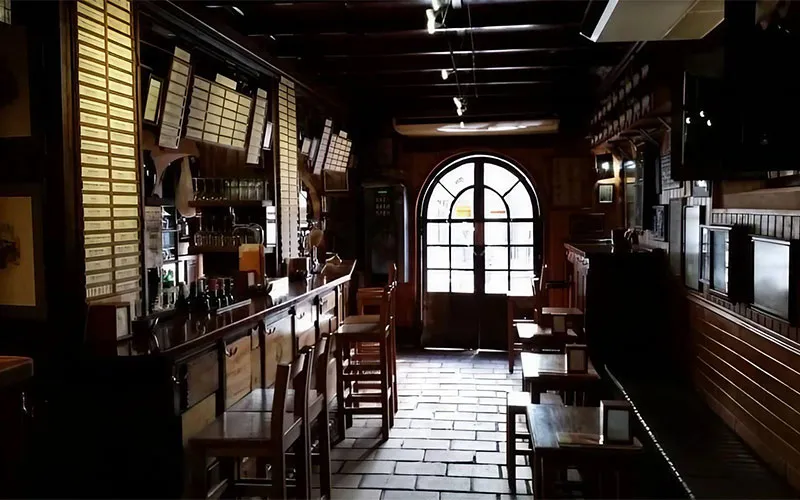
Al Sur de Granada
In the shadow of the Puerta de Elvira (the city’s best preserved Moorish city gate) on the lively Calle Elvira, Al Sur de Granada is a good place to start a night out in the city. The food, wines and craft beers have a heavily local, organic slant and are served in a friendly, relaxed environment. Being part bar, part delicatessen, it’s also a good place to pick up some foodie souvenirs or gifts for friends back home – with the added bonus that you can try before you buy.
Address: Calle Elvira, 150, 18010 Granada; 958 27 02 45
Taberna la Tana
This delightful little wine bar buried deep in the heart of the Realejo, has been serving up wine and high quality cold cuts for as long as anyone can remember. There’s a small dining room adjoining it, but for the best experience you need to pull up a chair at the bar, order a wine and enjoy the buzzy local vibe. The third in a great three card trick of a night out with La Trastienda and Casa de Vinos. A must for those who love foodie tours.
Address: Placeta del Agua, 3, 18009 Granada

Bodegas Espadafor
A spit ‘n’ sawdust joint at the end of Gran Via, the food (a mix of simple local staples) is not necessarily much to write home about, but the authentic feel of the place most certainly is. From its retro sign, to the barrels of local, fortified wines, ancient feria posters and the idyllic rural scenes of the tiles above the bar, it’s unmistakeably, gloriously Andaluz.
Address: Calle Tinajilla, s/n, 18001 Granada; 958 20 21 38
Things To Do
A Handpicked Collection of Unmissable Granada Attractions
Alhambra
Spain’s most visited tourist attraction needs little introduction. However, having spent a day wondering at the Nasrid Palaces, the Alcazaba, the gardens of the Generalife, the Renaissance palace of Carlos V and the Alhambra’s other assorted treasures, there’s plenty more of interest to explore in the immediate vicinity. The hill on which it sits is covered in shady woodland riddled with waterways and fountains – not to mention various atmospheric sights like the Puerta de Bib Rambla and the Torres Bermejas. The best way to finish up is with a walk down the Cuesta de los Chinos, a pathway snaking down the hill amongst crumbling masonry, to the river below.
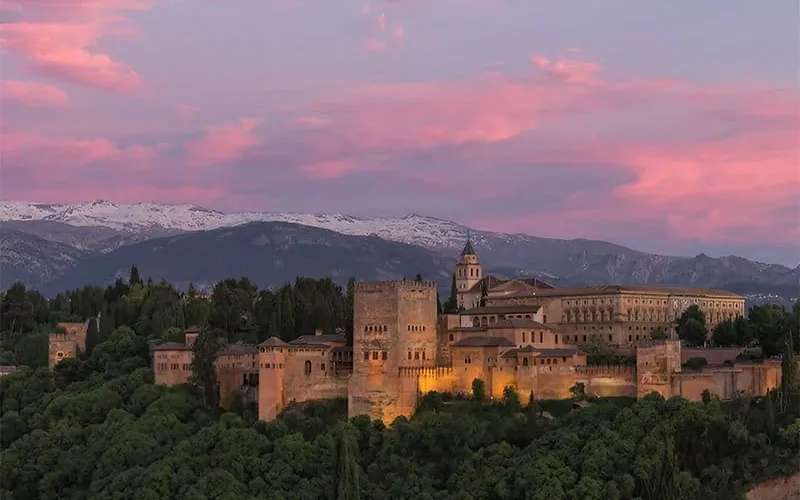
La Cartuja
Work on this Carthusian monastery on the outskirts of the city was started in the early 16th century. While plain and austere on the outside, the interiors contain some of the most impressive examples of Baroque architecture to be found anywhere in Spain. The Sacristy, a riot of gilded decoration and vivid frescoes, is particularly dazzling.
Address: Monasterio de la Cartuja, Paseo de Cartuja, Granada; 958 161 932
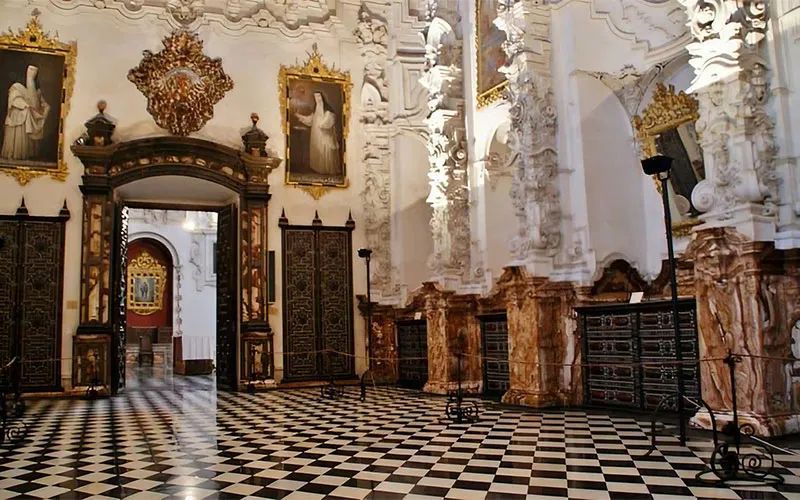
Palacio de Dar al-Horra
This Nasrid palace in the upper Albayzin was once the home of Aixa, the mother of Boabdil, the last Moorish ruler of Granada. It extends out around a shady courtyard with a babbling fountain at its heart, through arched doorways and wooden galleries up to a tower with stunning views.
Address: Callejon Ladron Agua, 8, 18010 Granada; 958 02 78 00
Casa de Zafra
The Casa de Zafra is, a little surprisingly, one of the least visited Moorish things to see in Granada. A Nasrid nobleman’s house built in the 14th century, it hides its beauty well from the street where the only sign of what lies within is a low, brick-arched doorway. Inside, the peaceful central patio is dissected by a long pool, and lined with elaborately stuccoed arches and decorative stone pillars.
Address: Calle Concepcion de Zafra, 4, 18010 Granada; 958 18 00 79
Monasterio de San Jeronimo
Built by the Catholic Kings in the early 16th century, this Geronimite monastery is made up of a beautiful cloistered courtyard and ornately decorated church as well as being the last resting place of Gonzalo Fernandez de Cordoba, the ‘Gran Capitan’. It rarely features on anyone’s list of things to do in the city, and consequently is quiet and rather forgotten about despite being full of faded frescoes, and generally just utterly beautiful.
Address: Calle Rector Lopez Argueta, 9, 18001 Granada; 958 27 93 37
Day Trips
La Alpujarra
Just outside Granada, a drive up into the Alpujarra makes for a great day trip. A mountainous region dotted with typical whitewashed villages, you can start out by passing through the lower towns of Orgiva and Lanjaron (a sleepy early 20th-century spa town). Heading on, you can wind your way upwards to Bubion, Capileira and Yegen (where Gerald Brenan lived in the 1920s and wrote South from Granada) before finally arriving in windswept Trevelez. At nearly 1500 metres above sea level, it’s Spain’s second highest village, and is the producer of some fine, air-cured ham which can be sampled in any of its bars.
Salobreña
At one point or another during the summer you’re going to want to escape the heat of the interior and head for the coast. One of the nearest beaches from Granada (at just under an hour away) is that of Salobreña. After a saunter round the narrow whitewashed streets and the old Moorish castle sitting on its rocky outcrop above the town, you can stretch out on the hot, dark sands for the afternoon interrupted only by a spot of lunch.
Alhama de Granada
Remote, a little lonely, and framed against the dramatic backdrop of the Sierra de Tejeda mountain range, Alhama could hardly be more atmospheric. Labyrinthine streets lined with crumbling townhouses rise up to an impressive church before dropping sharply off into a gorge, at the bottom of which is a babbling river and a series of ruined flourmills peeking out of the undergrowth. The town’s fall to the Christian forces in 1482 was one of a series of nails in the coffin of Granada’s resistance and prompted the ‘Ballad of the Fall of Alhama’ (translated by Lord Byron) with its mournful lament ‘Woe is Me, Alhama’.
Guadix
Less than an hour’s drive from Granada, the landscapes you pass on the way to Gaudix are stark, arid and wild – a mix of semi-desert and badlands. Guadix itself, though, is famous for one thing: its cave dwellings. The area to the south of the town is dotted with countless houses dug out of the earth, many of which, as shops and bars, are open to the public. The town is also home to a spectacular – and spectacularly twiddly – baroque cathedral.
Casa-Museo Federico Garcia Lorca de la Huerta de San Vicente
The visit to Lorca’s family home – now a museum of his life and works – barely constitutes a day trip from Granada in the strictest sense of the word. A lovely old cortijo on the edge of the city, you can spend a morning wandering through atmospheric rooms filled with original furniture or reading the great man’s poetry in the gardens, and still be back for lunch.
Address: Parque Federico Garcia Lorca, Calle Virgen Blanca, s/n, 18004 Granada; 958 25 84 66; www.huertadesanvicente.com.
Flamenco
Where to See Authentic Flamenco in Granada
Tabanco del Tio Gregorio
This tiny bar in the lower Albayzin couldn’t be more different to the rather formal La Plateria. On summer nights it’s hot, crowded and often more than a little chaotic; but it’s also authentic, with young, local performers, and absolutely bursting with passion and life.
Address: Cuesta de San Gregorio 24, 18009 Granada; 662137046
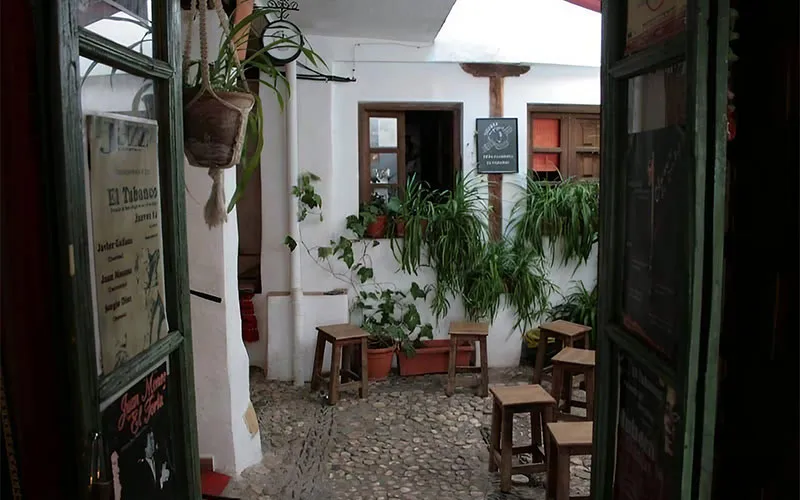
Corral del Carbon
Throughout the summer months the Corral del Carbon rolls out a varied schedule of excellent flamenco shows. While the music and dancing is invariably superb, featuring visiting performing artists of note, the building alone – a complete example of a Moorish caravanserai, or inn, with a stunning stucco doorway and galleried courtyard – is worth the entrance fee.
Address: Calle Mariana Pineda, 18009 Granada; 958 57 51 26
Le Chien Andalou
Convenience is the name of the game at Le Chien Andalou. It’s easy to find – being right on the River Darro – reasonably priced and refreshingly relaxed and unintimidating for the first-time visitor. A good introduction to flamenco in Granada and always a favourite on our private tours.
Address: Carrera del Darro, 7, 18010 Granada; 617 10 66 23
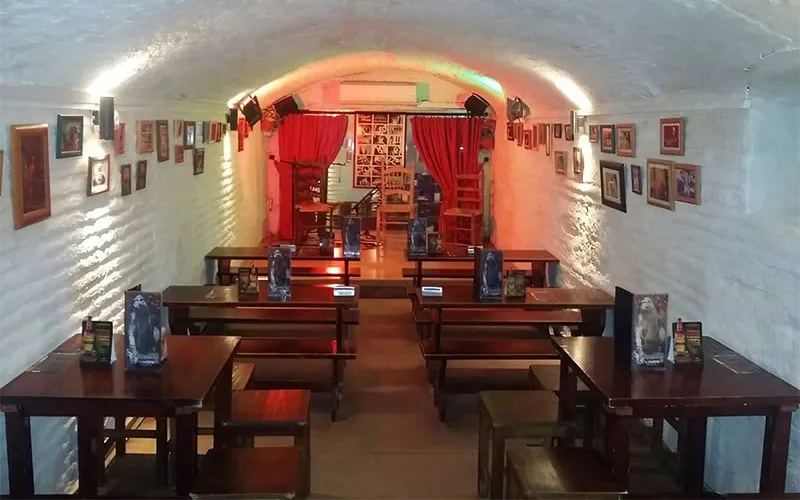
La Chumbera
To get to La Chumbera you first have to pass the largely best-avoided and touristy flamenco caves in Sacromonte. Home to the International School of Flamenco, this is without a doubt one of the very best places to see flamenco in Granada. It’s also possibly the most scenic, with the illuminated Alhambra vying for attention with the music and dancing during evening shows.
Address: Camino del Sacromonte, 107, 18010 Granada; 958 55 89 02
Practical Information
Where is Granada?
Granada is situated in the eastern part of Andalucia, Spain’s southernmost region. It’s located at the foot of the Sierra Nevada on the edge of fertile agricultural plains at the meeting point of four rivers, the Monachil, the Genil, the Beiro and the Darro. As capital of its province (and the third largest city in the region), it is well connected by road to the rest of the region, and is approximately 130 km inland from Malaga to the northeast, 200 km southeast of Cordoba and 260 km east of Seville.
Getting There
Getting to Granada by train is not as easy as you might imagine. The journeys from Madrid (5.5 hours) and Seville (4 hours) are both simple enough, but Malaga (most people’s entry point to the city) crucially, is more complicated – there’s no direct route, and you have to change at Antequera. On arrival, Granada train station is fairly central. (Renfe.es).
The bus is generally a better option. Buses from Malaga take around 2 hours and leave every hour from early morning to late in the evening (Alsa.es). Seville is around 3.5 hours away, while getting here from Cordoba takes a little over 2 hours. Granada bus station is on the outskirts of town, so a taxi ride (or longish local bus ride) is required to get you into the old centre.
Flights
Granada airport (Granadaairport.com) regularly flirts with direct flights from the UK with both Ryanair and British Airways having run, and then suspended, routes there. However, at the time of writing there were no airlines running UK flights. There are plenty of internal flights to Granada from Madrid and Barcelona, though.
When to Go & Climate
Summers in the city are hot and dry, while at well over 700 metres above sea level, winters can be on the chilly side. Not that this should put you off in the slightest. The views of the sun setting on the snowy Sierra Nevada with the Alhambra in the foreground have to be seen to be believed. In terms of Granada weather, spring and autumn are the absolute best time to go with temperatures generally hovering around the late teens to early twenties centigrade.
Standout times to visit Granada include: Semana Santa (Holy Week – depending on Easter dates), the Cruces de Mayo Festival (early May), the Flamenco Festival in June/July and the Jazz Festival in November.
Granada Tourist Information
There are three tourist information offices in Granada:
Oficina de Turismo / Patronato de Turismo de Granada
Carcel Baja, 3
958 24 71 28
Open until 8pm
Oficina de Turismo de Granada
Calle Santa Ana, 4
958 57 52 02
Oficina de Turismo
Ayuntamiento de Granada, Plaza del Carmen s/n
958 24 82 80
Open until 7pm
As Seen In













